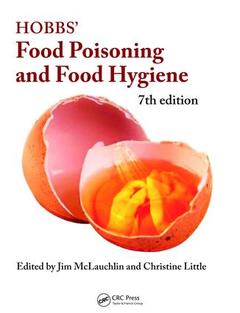Description
Hobbs' Food Poisoning and Food Hygiene (7th Ed.)
Authors: McLauchlin Jim, Little Christine, Hobbs Betty C.
Language: English
Subjects for Hobbs' Food Poisoning and Food Hygiene:
Keywords
Tempera Ture; Paralytic Shellfish Poisoning; Staphylococcal Food Poisoning; FOODBORNE INFECTIONS; Port Health Authorities; Staphylococcal Enterotoxin; Food Standards Agency; Foodborne Disease; Food Poisoning; Food Hygiene; Cooked Meat; Food Business Operators; Foodborne Illness; Microbiological Risk Assessments; Health Protection Agency; Microbiological Criteria; Official Food Controls; Microbial Epidemiology; General Food Law Regulation; HACCP Procedure; Ri Ne; Food Poisoning Organisms; Cu Ba; Port Authority; Food Research
278.07 €
In Print (Delivery period: 14 days).
Add to cartPublication date: 11-2017
· 18.9x24.6 cm · Hardback
57.34 €
Subject to availability at the publisher.
Add to cartPublication date: 06-2007
360 p. · 18.9x24.6 cm · Paperback
Description
/li>Contents
/li>Readership
/li>Biography
/li>
Jim McLauchlin PhD, Health Protection Agency Centre for Infections, London, UK
Christine Little PhD, LLM, Health Protection Agency Centre for Infections, London, UK
These books may interest you

Food Safety and Human Health 146.54 €



